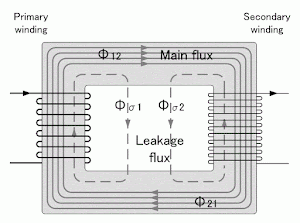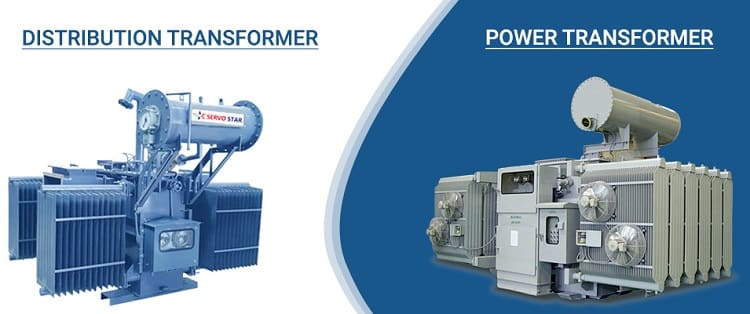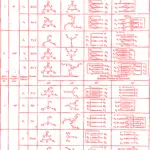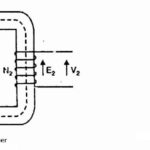A transformer is a static piece of equipment used either for raising or lowering the voltage of an AC supply with a corresponding decrease or increase in current. It essentially consists of two windings on a common laminated magnetic core.
- Primary Winding – AC source is connected to this winding.
- Secondary Winding – Load is connected to this winding.
The alternating voltage V1 whose magnitude is to be changed is applied to the primary. Depending upon the number of turns of the primary (N1) and secondary (N2), an alternating e.m.f. E2 is induced in the secondary.
This induced e.m.f. E2 in the secondary causes a secondary current I2. Consequently, terminal voltage V2 will appear across the load.

- If V2 > V1 , it is called a step-up transformer.
- If V2 < V1 , it is called a step-down transformer.
When an alternating voltage V1 is applied to the primary, an alternating flux φ is set up in the core. This alternating flux links both the windings and induces e.m.f.s E1 and E2 in them according to Faraday’s laws of electromagnetic induction. The e.m.f. E1 is termed as primary e.m.f. and e.m.f. E2 is termed as secondary e.m.f.
E1 = –N1 (dφ/dt)
E2 = –N2 (dφ/dt)
∴ E2/E1 = N2/N1
Note that magnitudes of E2 and E1 depend upon the number of turns on the secondary and primary respectively.
The following points may be noted carefully:
- The transformer action is based on the laws of electromagnetic induction.
- There is no electrical connection between the primary and secondary. The a.c. power is transferred from primary to secondary through the magnetic flux.
- There is no change in frequency i.e., output power has the same frequency as the input power.
The losses that occur in a transformer are:
- core losses – eddy current and hysteresis losses
- copper losses—in the resistance of the windings
In practice, these losses are very small so that output power is nearly equal to the input primary power. In other words, a transformer has very high efficiency.
[HDquiz quiz = “6326”]
HDquiz quiz = “6326”








it’s hard to find the content i mean table of content from the basic to advanced level not provided, some random topics are given which makes us difficult to develop concepts from the beginning and move forward gradually…
It was really interesting when you talked about how transformers are used to lower or raise the voltage of an AC supply. It seems like you would want to lower the power of electrical currents that are going into a home. That way all of the electrical outlets and devices in a home aren’t blown out by a strong current. http://tarbellassociates.com/territories-and-lines/
great content but people should visit https://www.eengineer.in/transformer-definition-working-principle-diagram-types/ for a better infographic explanation.